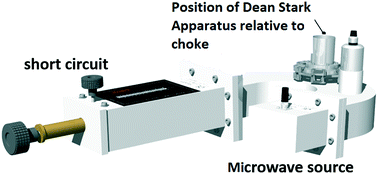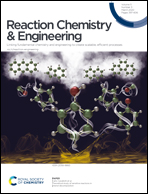The importance of ionic conduction in microwave heated polyesterifications†
Abstract
Significant increases in the reaction rate and final conversion of a model polyesterification are reported by the use of microwave heating. These increases have been demonstrated when both organometallic and inorganic acidic catalysts have been employed. Furthermore, the results achieved by application of microwave heating were shown to be influenced by the type of catalyst that was employed. Catalyst species whose mechanistic cycles involve an associative bond were found to exhibit better performance when electromagnetic heating was applied. These observations have been attributed to the fact that electromagnetic energy in the microwave region is non-ionising and thus will not promote the cleavage of formal bonds. However, it will have significant influence on the charge separation that will be achieved in systems which involve associative bonds via an energy transfer mechanism that involves ionic conduction. This increase in rate has been attributed to two thermal effects which are both related to the implementation of microwave heating. The first is attributed to the volumetric heating of the reaction medium, i.e. efficient heating of the diol reagent leading to improved energy transfer through the entire reaction medium. This in turn results in the reaction medium achieving the target temperature in a significantly shortened time compared to conventional heating. The second is the successful application of selective heating, in this case greater efficiency by which the catalysts are heated by the electromagnetic energy as the energy couples directly into these molecular species rather than conduction/convection from the bulk reaction medium. This improved direct energy transfer leads to locally higher temperatures at these catalytic centres and so increased reaction rates, where catalysts that undergo ionic condition can interact with the non-ionising microwave energy to a greater extent than a catalyst whose cycles require the scission of a bond. Additionally, the influence of ionic conduction was also shown to lead to the rates of un-catalysed microwave heated polymerisations systems being comparable to conventionally heated samples which did contain a catalyst, thus is proposed to be a general mechanistic phenomenon and not solely focused on catalysis.



 Please wait while we load your content...
Please wait while we load your content...